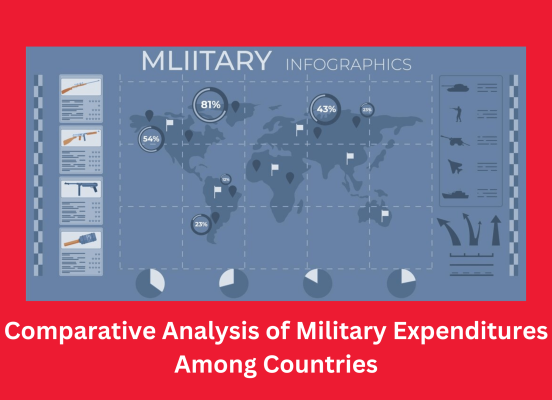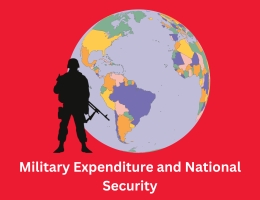
Comparative Analysis of Military Expenditures Among Countries: Contrasting and Comparing Defense Spending Across Nations
- By admin --
- Saturday, 09 Mar, 2024
Introduction:
Military expenditure is a crucial aspect of national budgets, reflecting a country's strategic priorities, security threats, and geopolitical aspirations. This essay conducts a comparative analysis of military expenditures among various countries, highlighting disparities, trends, and underlying factors shaping defense spending across the globe.
Overview of Military Expenditures:
Military expenditures encompass a wide range of expenses, including personnel salaries, procurement of weapons and equipment, research and development, and maintenance of infrastructure. These expenditures are typically presented as a percentage of gross domestic product (GDP) or in nominal terms, allowing for comparisons across countries and over time.
United States:
As the world's largest economy and a global superpower, the United States maintains the highest military expenditure globally. With a defense budget surpassing $700 billion annually, the U.S. allocates significant resources to its armed forces, supporting a vast network of military bases worldwide and funding advanced weapons systems and technological innovations. The U.S. defense budget is driven by a combination of factors, including national security concerns, geopolitical interests, and defense industry lobbying.
China:
China's military spending has experienced substantial growth in recent decades, reflecting its rise as a regional and global power. With a defense budget exceeding $200 billion, China has invested heavily in modernizing its armed forces, prioritizing the development of advanced weapons platforms, cyber capabilities, and space technologies. Beijing's military expenditures are driven by its territorial disputes in the South China Sea, aspirations for regional hegemony, and efforts to counter perceived U.S. strategic encirclement.
Russia:
Russia's military expenditures have increased significantly since the early 2000s, driven by President Vladimir Putin's efforts to modernize the country's armed forces and restore Russia's status as a great power. With a defense budget surpassing $60 billion, Russia has prioritized investments in strategic weapons systems, including nuclear deterrents, hypersonic missiles, and electronic warfare capabilities. Moscow's military expenditures are influenced by its assertive foreign policy, territorial ambitions, and concerns about NATO expansion.
European Union:
While individual European countries have varying levels of military spending, collectively, the European Union (EU) represents a significant share of global defense expenditures. However, European defense budgets have faced constraints due to fiscal austerity measures, divergent national interests, and institutional fragmentation within the EU. Efforts to enhance defense cooperation through initiatives such as the Permanent Structured Cooperation (PESCO) and the European Defense Fund aim to address these challenges and promote greater defense integration among EU member states.
Middle East:
Countries in the Middle East, particularly oil-rich Gulf states like Saudi Arabia and the United Arab Emirates (UAE), allocate substantial resources to military expenditures. With security threats stemming from regional rivalries, terrorism, and Iran's influence, Gulf states prioritize defense investments to bolster their military capabilities and maintain strategic alliances with Western powers. However, the sustainability of high military spending in the face of declining oil revenues and economic diversification efforts remains a concern.
Emerging Powers:
Emerging powers such as India, Brazil, and Turkey have increased their military expenditures in recent years, reflecting their ambitions for regional influence and strategic autonomy. India, in particular, has ramped up defense spending to modernize its armed forces and address security challenges posed by neighboring Pakistan and China. Brazil and Turkey have also invested in indigenous defense industries and pursued strategic partnerships with other emerging powers to enhance their military capabilities.
Conclusion:
The diverse factors shaping defense spending globally can be highlighted through a comparison of military expenditures in different countries. Even though significant defense budgets are still being maintained by traditional great powers such as the United States and Russia that want to dominate world politics, those countries newly becoming important either territorially or politically tend to increase military expenditure so as protect their interests or/while improving their position strategically. This happens when geopolitical tensions rise along security concerns and increments in expenditures occur on armament which may sometimes have devastating impacts on economic growth at national levels.





